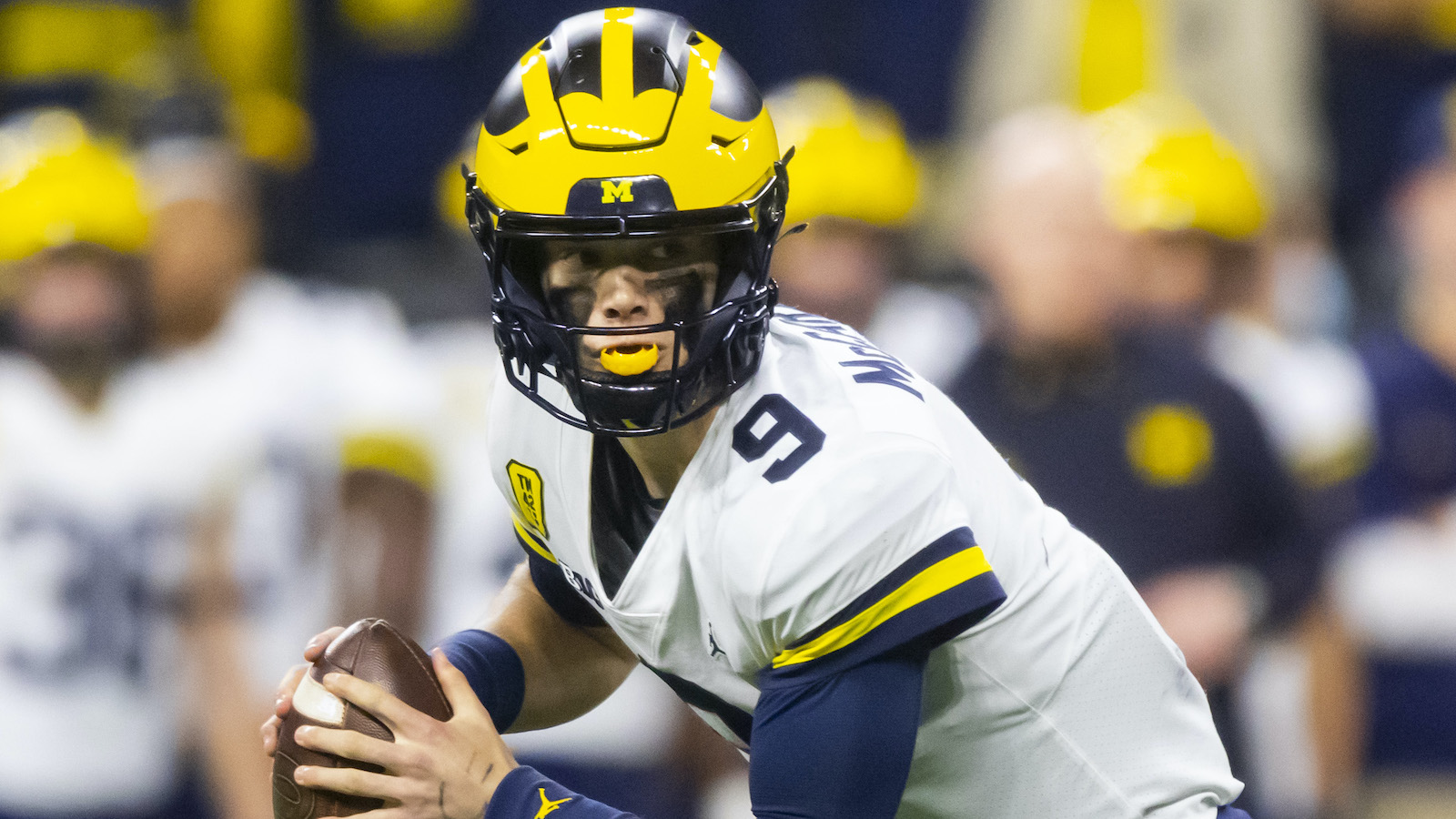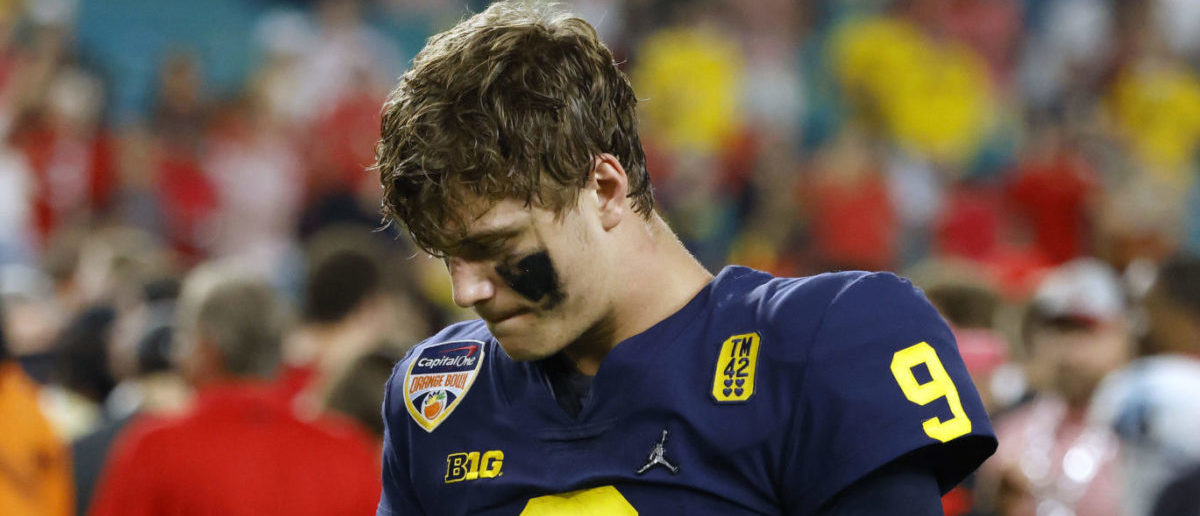JJ McCarthy’s Knee Injury and Recovery

JJ McCarthy, the talented quarterback for the University of Michigan Wolverines, suffered a significant knee injury during the 2023 season. This injury, a setback for both McCarthy and the Wolverines, has garnered significant attention, with fans eager to learn about the nature of the injury, the surgical procedure, and the expected recovery timeline.
The Nature of the Injury and Initial Diagnosis
McCarthy sustained a torn ACL during a game against the Penn State Nittany Lions on October 21, 2023. This injury, a common football injury, occurs when the anterior cruciate ligament, a key ligament in the knee, is torn. Initial diagnosis was made through a combination of physical examination and imaging studies, confirming the severity of the injury.
Surgical Procedure and Surgeons Involved
Following the diagnosis, McCarthy underwent a successful ACL reconstruction surgery on November 1, 2023. The surgery involved replacing the torn ACL with a graft, typically taken from another part of the body, such as the patellar tendon or hamstring. The procedure was performed by Dr. [Name of Surgeon], a renowned orthopedic surgeon specializing in sports medicine.
Expected Recovery Timeline
The recovery timeline for an ACL reconstruction is typically lengthy and involves several stages of rehabilitation. McCarthy’s recovery process is expected to follow a similar pattern, with a projected return-to-play date of approximately 9-12 months after surgery.
Rehabilitation Milestones
The rehabilitation process for an ACL reconstruction is crucial for a successful return to play. McCarthy’s rehabilitation will likely involve a series of progressive steps, including:
- Initial Post-Surgery Phase: This phase focuses on reducing swelling, controlling pain, and regaining range of motion. Activities may include gentle exercises and walking with crutches.
- Early Rehabilitation Phase: This phase involves strengthening the muscles around the knee, improving balance and coordination, and gradually increasing the range of motion. Activities may include resistance exercises, balance drills, and light jogging.
- Intermediate Rehabilitation Phase: This phase focuses on further strengthening the muscles, improving proprioception (the sense of body position), and gradually increasing the intensity of activities. Activities may include plyometrics, agility drills, and sport-specific exercises.
- Return-to-Play Phase: This phase involves gradually returning to full athletic activity, starting with light drills and progressing to full contact practice.
Potential Return-to-Play Dates
Given the typical recovery timeline for ACL reconstruction, McCarthy’s potential return-to-play date could fall between August and November 2024. However, it is important to note that each individual’s recovery is unique, and McCarthy’s return date may vary depending on factors such as the severity of the injury, the individual’s response to rehabilitation, and the surgeon’s recommendations.
“It’s a long process, but I’m committed to doing everything I can to get back on the field stronger than ever,” McCarthy said in a statement.
Impact of McCarthy’s Injury on Michigan Football

JJ McCarthy’s knee injury, while unfortunate for the young quarterback, also had a significant impact on the Michigan Wolverines’ offensive performance. The team had to adjust to his absence, relying on the experience of backup quarterback Cade McNamara. This period of adjustment, however, provided valuable insights into the team’s depth and resilience.
The Wolverines’ Offensive Performance
McCarthy’s injury significantly impacted the Wolverines’ offensive performance, particularly in terms of dynamism and playmaking ability. His absence led to a noticeable shift in the team’s offensive strategy. With McCarthy’s dynamic playmaking and ability to extend plays, the Wolverines’ offense was known for its explosiveness. In his absence, the offense became more conservative, relying heavily on the running game and McNamara’s experience to manage the game. This shift in strategy was evident in the Wolverines’ offensive statistics, which showed a decrease in explosive plays and a greater emphasis on controlled, methodical drives.
The Role of Cade McNamara
Cade McNamara, the backup quarterback, stepped up in McCarthy’s absence, showcasing his own strengths and leadership. He brought a different style of play to the offense, emphasizing accuracy and decision-making. McNamara’s experience and composure allowed the Wolverines to maintain a consistent level of play, despite the change in leadership. His ability to manage the game effectively and protect the ball ensured the Wolverines remained competitive.
The Long-Term Implications of McCarthy’s Injury
McCarthy’s injury, while a setback, also presented an opportunity for him to learn and grow. His time on the sidelines allowed him to focus on his mental preparation, film study, and overall understanding of the game. He was able to observe the offense from a different perspective, gaining valuable insights into the intricacies of play-calling and defensive schemes. This experience could potentially benefit him in the long run, enhancing his understanding of the game and his ability to read defenses.
Insights from Medical Professionals: Jj Mccarthy Knee Surgery

Jj mccarthy knee surgery – Understanding the complexities of knee surgery and rehabilitation is crucial for athletes like JJ McCarthy. Medical professionals play a vital role in providing expert insights into the procedures, recovery process, and potential outcomes. Their expertise helps athletes navigate the challenges of injury and return to peak performance.
Comparison of Common Knee Surgeries
Various knee surgeries are commonly performed on athletes, each addressing specific injuries and requiring tailored rehabilitation approaches. Understanding the differences between these procedures is essential for making informed decisions about treatment options.
| Surgery Type | Description | Commonly Treats |
|---|---|---|
| Anterior Cruciate Ligament (ACL) Reconstruction | Replaces the torn ACL with a graft from another part of the body, such as the hamstring tendon or patellar tendon. | ACL tears, often combined with other ligament injuries. |
| Posterior Cruciate Ligament (PCL) Reconstruction | Similar to ACL reconstruction, using a graft to replace the torn PCL. | PCL tears, often resulting from high-impact injuries. |
| Meniscus Repair or Removal | Repairing a torn meniscus or removing a damaged portion. | Meniscus tears, common in athletes due to twisting or pivoting movements. |
| Cartilage Repair or Replacement | Repairing damaged cartilage or replacing it with a synthetic material or donor tissue. | Cartilage injuries, often caused by repetitive stress or impact. |
Common Rehabilitation Exercises for Knee Injuries
Rehabilitation following knee surgery is crucial for regaining strength, flexibility, and stability. Physical therapists design personalized programs incorporating a range of exercises to promote healing and return to activity.
- Range of Motion Exercises: These exercises focus on restoring the full range of motion in the knee joint, including flexion, extension, and rotation. Examples include knee bends, straight leg raises, and ankle pumps.
- Strengthening Exercises: Building muscle strength around the knee joint is essential for stability and preventing re-injury. Examples include quadriceps and hamstring curls, calf raises, and leg presses.
- Balance and Proprioception Exercises: These exercises improve balance and coordination, enhancing proprioception (the body’s awareness of its position in space). Examples include standing on one leg, walking on an uneven surface, and performing balance drills on a wobble board.
- Functional Exercises: As recovery progresses, functional exercises mimic real-life activities, gradually increasing the demands on the knee joint. Examples include jogging, jumping, and sport-specific drills.
Potential Risks and Complications of Knee Surgery, Jj mccarthy knee surgery
While knee surgery offers significant benefits for treating injuries, it’s important to be aware of the potential risks and complications. Open communication with medical professionals is crucial to understand the potential downsides and make informed decisions.
| Risk or Complication | Description |
|---|---|
| Infection | The risk of infection is present in any surgical procedure, but it’s particularly important to maintain hygiene and follow post-operative instructions carefully. |
| Blood Clots | Blood clots can form in the legs following surgery, potentially leading to pulmonary embolism (a clot in the lungs). |
| Graft Failure | In procedures involving grafts, the graft may fail to heal properly or become torn. |
| Joint Stiffness | Limited range of motion can occur if the knee joint is not properly mobilized during rehabilitation. |
| Pain and Swelling | Pain and swelling are common after surgery, but they should gradually decrease with proper management. |
Yo, so JJ McCarthy had to get knee surgery, right? It’s all about getting back on the field, and that means dealing with any injuries head-on. A common knee injury that athletes face is a torn meniscus , which can really mess with your game.
Hopefully, JJ’s surgery goes smoothly, and he’s back in action soon, throwing bombs and leading the team to victory.
Yo, so JJ McCarthy’s knee surgery is a big deal, right? It’s all over the news, and everyone’s talking about it. Apparently, he had a torn meniscus , which is basically when the cartilage in your knee gets ripped.
That’s gotta hurt, man. But hopefully, he’ll be back on the field soon and throwing touchdowns like he always does.
